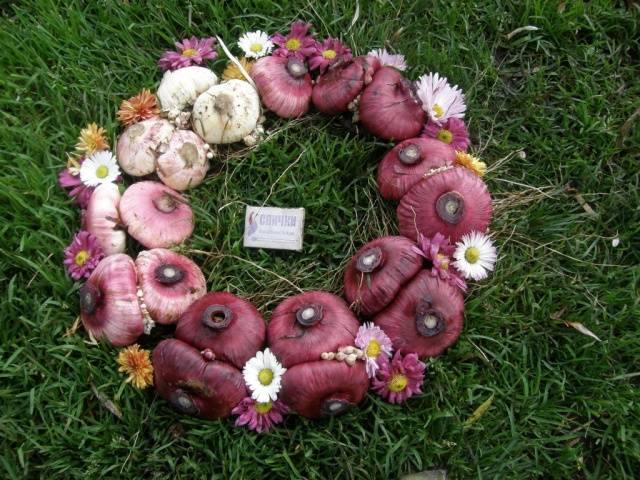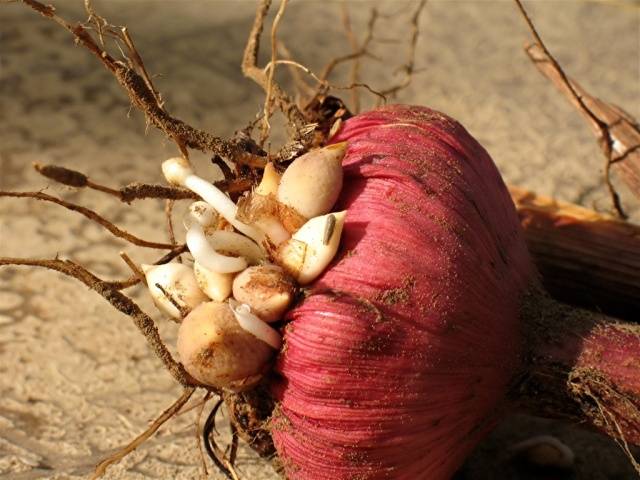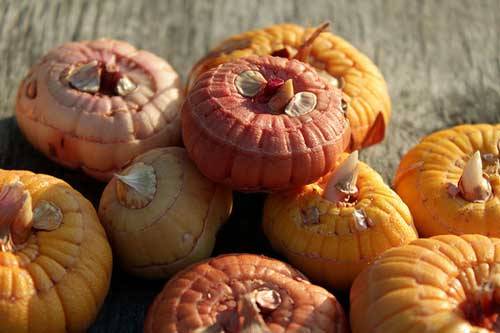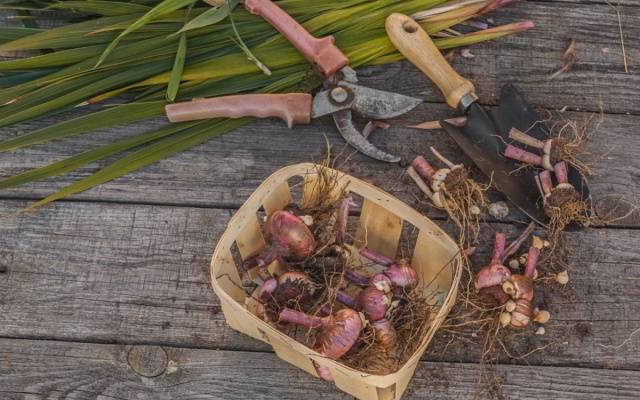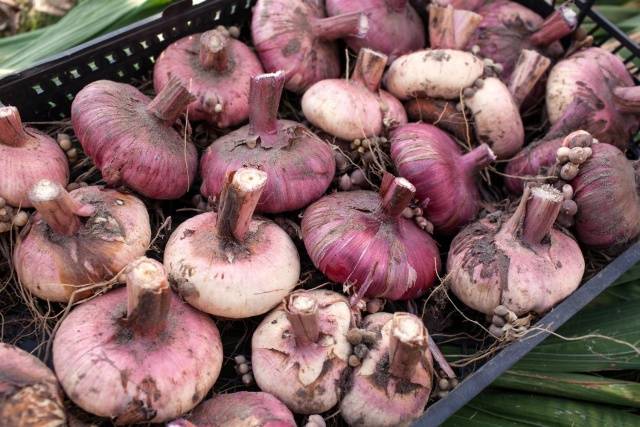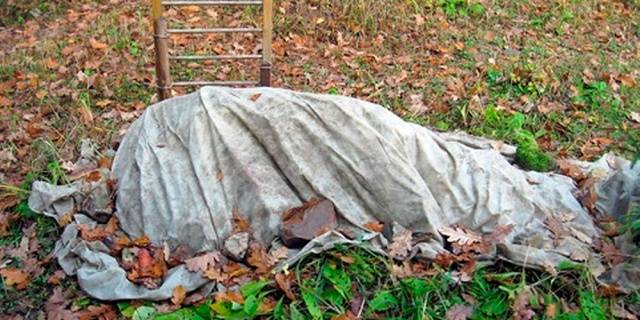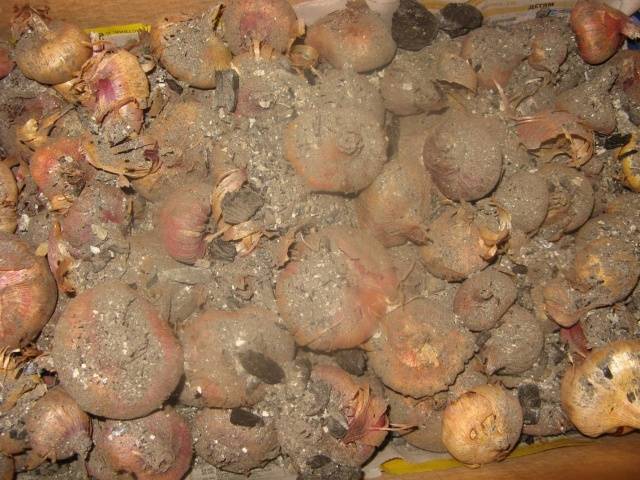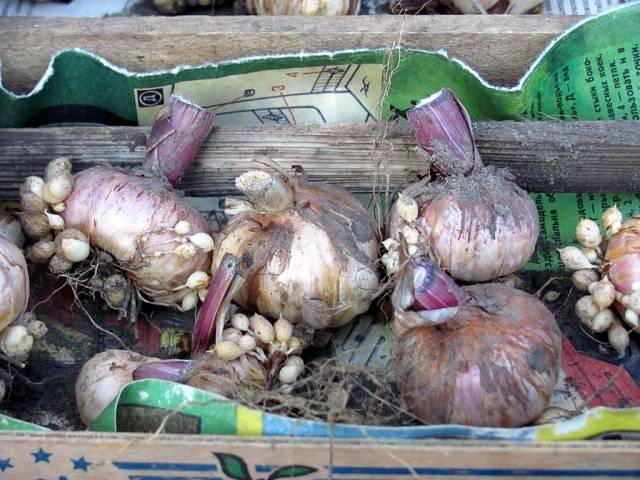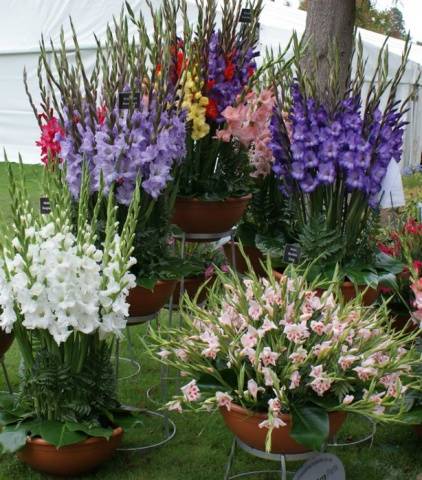Content
Gladioli are bulbous flowers, tall, with large voluminous inflorescences. These flowers will definitely not get lost in the garden, they invariably become the center of attention, thanks to their bright colors and exotic appearance. It is not difficult to grow gladioli: they are not too whimsical, except for watering, tying and fertilizing, the plants do not need anything. FROMfalsities begin at the end of the summer season, when the flowers have faded, the question arises of how to preserve the bulbs until next spring.
How to store gladioli in the winter at home, how to collect the bulbs correctly, and what is training them for winter storage, you can find out from this article.
Cleaning and storage of gladioli
To the great regret of gardeners, leaving gladioli tubers right in the ground for the winter will not work - these flowers are too thermophilic, they will not tolerate Russian frosts. Even in southern regions with a mild climate, gladioli are dug up in the fall in order to examine the bulbs, sort and remove diseased specimens, separate large tubers and babies (gladiolus tubers).
In the ground, the bulbs are saturated with moisture, begin to get sick with fungal infections, rot and deteriorate. Because of this, every year there is digging gladioli tubers in order to re-plant them in the spring in the same or another place in the garden.
The work of a gardener with faded gladioli can be divided into several stages:
- Digging bulbs out of the ground.
- Pruning the stems.
- Drying and sorting of tubers.
- Disinfection of gladioli.
- Storing the bulbs.
So, before sending flower tubers for storage, they need to be dug up and properly prepared.
How to prepare gladiolus bulbs before winter storage
It is quite difficult to save gladioli and their bulbs - the tubers are capricious and react too much to fluctuations in temperature and humidity. In addition, flower bulbs are a real treat for insect pests (most often, these are tips), they are often affected by rot and fungal infections.
Storing gladiolus bulbs is challenging, but doable. A large percentage of tubers can be preserved if they are properly prepared for storage.
So, the preparation of tubers is as follows:
- The optimal period for harvesting gladioli is considered the beginning of October.... In most regions, it is already cool at this time, but heavy rains and frosts are still ahead. Different varieties of gladioli differ in terms of flowering, so it is impossible to name the exact date of harvesting flowers. It is optimal if the bulbs are dug up a month after the last bud wilted. If the variety is late, and cold weather comes, you need to dig out the flowers as early as possible, not paying attention to the recommended time (frost is much more dangerous than premature harvesting).
- It is recommended to dig up the bulbs with a pitchfork, but you can also do this with a shovel. 10-15 cm recede from the bush and carefully dig in the ground, lifting it up. Hand grasp the lower part of the stem and pull out the bulbs, being careful not to damage them.
- The soil should be carefully cleaned and the stems should be trimmed with a sharp, clean knife or garden pruner.It is recommended to leave hemp no shorter than 20 cm - this way the bulb will not dry out too much, and a tag with the name of the variety and a shade of gladiolus can be attached to the remainder of the stem (this will help when drawing up a flower bed in spring).
- Peeled and trimmed bulbs are examined, trying to identify all diseased, damaged, rotten or pest-eaten specimens. If the defects are small, you can try to cut them out with a sharp knife, and fill the wound with strong potassium permanganate or cover with brilliant green. At this stage, different varieties of gladioli are sorted and signed.
- Now you should separate the babies and annual unripe bulbs. Children are stored in the same way as the rest of the tubers. The only recommendation: if possible, it is better to create slightly different conditions for tubers, with a temperature of about 5 degrees and a humidity of 85-90%. Corms that did not have time to ripen are unlikely to survive until spring if stored together with the rest of the gladioli. Such onions are best preserved in paraffin. You just need to melt a candle, grab the stem of the gladiolus with your hand and dip it in a liquid solution for a few seconds. Then quickly put it in cold water and put it in a cardboard or wooden box.
- The main rule responsible for the preservation of gladioli until spring is that the bulbs must be thoroughly dried. Tubers of flowers are dried at room temperature - about 18-20 degrees. The scales are not removed from the bulbs, otherwise the tubers will evaporate moisture too quickly and fade. They lay out gladioli in a dry place on a shelf or on a table, provide them with regular ventilation and a constant temperature. So gladioli should lie down for about 20-30 days.
- After drying, gladioli are best disinfected. This will protect them from fungus, rot, and the spread of infections. You can use a solution of potassium permanganate or chlorophos in a proportion of 20 grams per bucket of water. The corms are soaked in a disinfectant solution for 20-30 minutes. After that, they need to be thoroughly dried again!
The preparatory work is over, you can start laying the bulbs for storage.
How to store gladiolus bulbs at home in winter
You can store tubers in different ways, but in order for them to stay until spring and be healthy, you will have to adhere to the following regimen:
- air temperature - within 4-7 degrees;
- air humidity - at the level of 65-75%;
- complete lack of sunlight;
- the possibility of airing.
Much depends on the conditions in which the gardener lives, as well as on the number of gladioli. You can recommend some of the most successful ways to store gladioli bulbs for the winter.
Storing tubers in the ground
This method is good for regions with warm winters and mild climates. On the site, it is necessary to find a place with a low occurrence of groundwater and loose, well-drained soil.
A trench is dug here, about 80 cm deep, its width should be at least 70 cm. Before the onset of cold weather, you need to put the tubers of gladioli in wooden boxes, sprinkling the bulbs with dry sand or sawdust... The boxes are placed in a trench and covered with dry foliage, and a plastic wrap is pulled on top.
Flowers will be protected from melt water, light frost and precipitation. This method is good for those who do not have a basement on the site.
How to properly store bulbs in your basement
Not every basement or cellar is suitable for storing gladioli. Vegetables or fruits should not be kept in the store at the same time as the flowers, since the fruits evaporate moisture, and its excess harms the tubers.
The basement must be equipped with a good ventilation system, constant temperature and humidity must be observed.
Boxes or boxes with bulbs sprinkled with sand or sawdust are placed on wooden pallets, grates to provide air flow from below.In such conditions, the maximum number of tubers will be preserved, they practically will not lose in volume, they will be healthy.
How to store bulbs until spring in a city apartment
Many summer residents live in the city, so they have to store flowers in an apartment. Of course, the corms will feel much worse here than in the basement, but it is still possible to keep most of the gladioli in a city apartment.
There are several ways to store corms in an apartment:
- On the loggia. The corms are laid out in one layer in boxes or boxes, placed on an elevated place (stool, shelf). When severe frosts begin on the street, boxes with gladioli are covered with a blanket.
- The room temperature range from 18 to 20 degrees allows you to store gladioli directly in the apartment. It is better to choose for this the coolest and wettest place in the home (toilet, pantry, hallway or vestibule). The bulbs are wrapped in paper and folded in a plastic bag with many cut holes.
- You can also store gladioli in the refrigerator, because there is a stable temperature and humidity. They are also wrapped in paper and folded into a bag or canvas bag.
Conclusion
It is necessary to store gladioli bulbs at home correctly, then the planting material will be safe and sound by spring. Regardless of which storage method the gardener chooses, do not forget to regularly inspect the tubers, remove rotten or damaged specimens, and provide ventilation.

